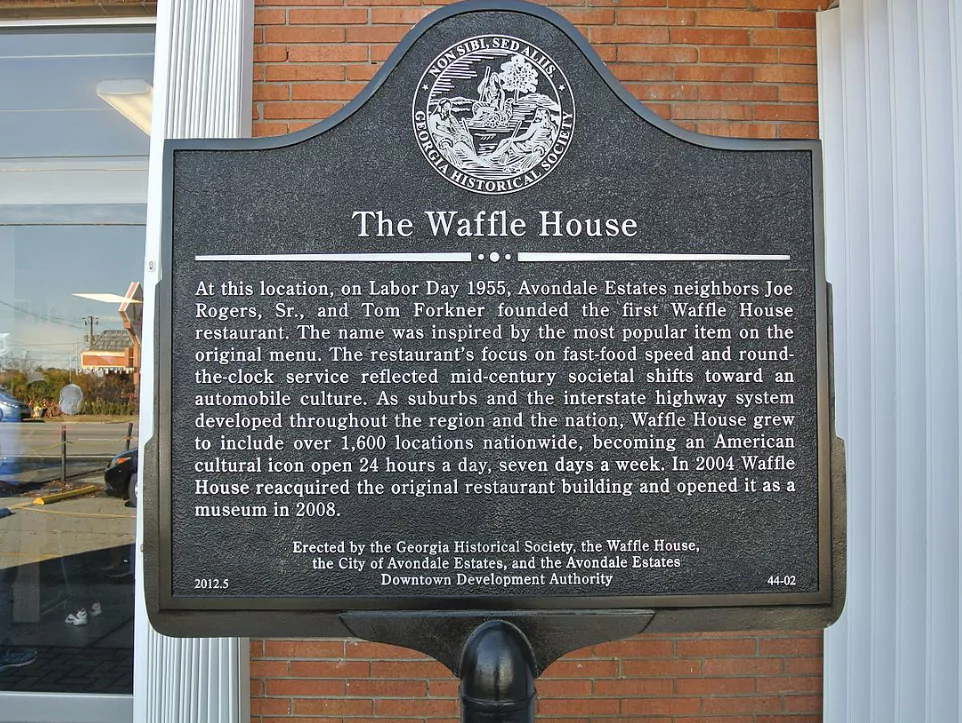
The Waffle House Story: More Than Just Breakfast
When you think of Waffle House, you might picture golden waffles and late-night hash browns. But there’s so much more to this iconic American chain. Let’s dive into the rich history and unique significance of Waffle House in American culture.
The Birth of a Breakfast Legend
In 1955, in the quiet suburb of Avondale Estates, Georgia, Tom Forkner and Joe Rogers Sr. opened the doors to the very first Waffle House. Their vision? A restaurant that would serve their friends and neighbors. Little did they know they were starting a cultural phenomenon.
What’s in a Name?
You might wonder, “Why Waffle House?” Well, it’s not just a catchy name. Waffles were actually the most profitable item on the restaurant’s original 16-item menu. Forkner and Rogers Sr. chose the name to highlight their star dish. It’s a classic case of truth in advertising!
24/7 Service: More Than Just Convenience
One of Waffle House’s most famous features is its round-the-clock service. Rain or shine, day or night, you can count on those yellow signs glowing in the distance. But this commitment to staying open has led to something quite unexpected…
The Waffle House Index: Measuring Disasters with Breakfast
Believe it or not, Waffle House plays a role in disaster response across the United States. The “Waffle House Index” is an informal metric used by disaster management officials to gauge the severity of a storm and its impact on a community. Here’s how it works:
- Green: Waffle House is open and offering a full menu. The area is likely minimally affected.
- Yellow: Waffle House is open but serving a limited menu. This suggests the area has been impacted and may have power outages or supply issues.
- Red: Waffle House is closed. This is rare and indicates a severe situation in the area.
This index was coined by Craig Fugate, a former administrator at the Federal Emergency Management Agency (FEMA). While it’s not an official measure, FEMA does unofficially use the Waffle House Index to help inform their disaster response strategies.
Why Waffle House?
You might wonder why Waffle House, of all places, became this unofficial barometer of disaster impact. It’s due to their exceptional preparedness and commitment to serving their communities:
- Robust disaster plans: Waffle House has detailed protocols for operating during various types of emergencies.
- Local supply chains: They work closely with local suppliers, allowing them to reopen quickly after disasters.
- Generator power: Many locations have generators, enabling them to operate during power outages.
A Cultural Icon
From its humble beginnings as a neighborhood eatery to its role in disaster management, Waffle House has become more than just a restaurant. It’s a symbol of resilience, community, and good old-fashioned comfort food.
So the next time you’re enjoying a waffle at 3 AM, remember: you’re not just having a meal, you’re participating in a piece of Americana. And who knows? Your late-night craving might just be helping emergency responders gauge the state of your community!
Whether you’re a Waffle House regular or have never stepped foot in one, there’s no denying the unique place this chain holds in American culture. It’s truly more than just a waffle house – it’s a waffle home.